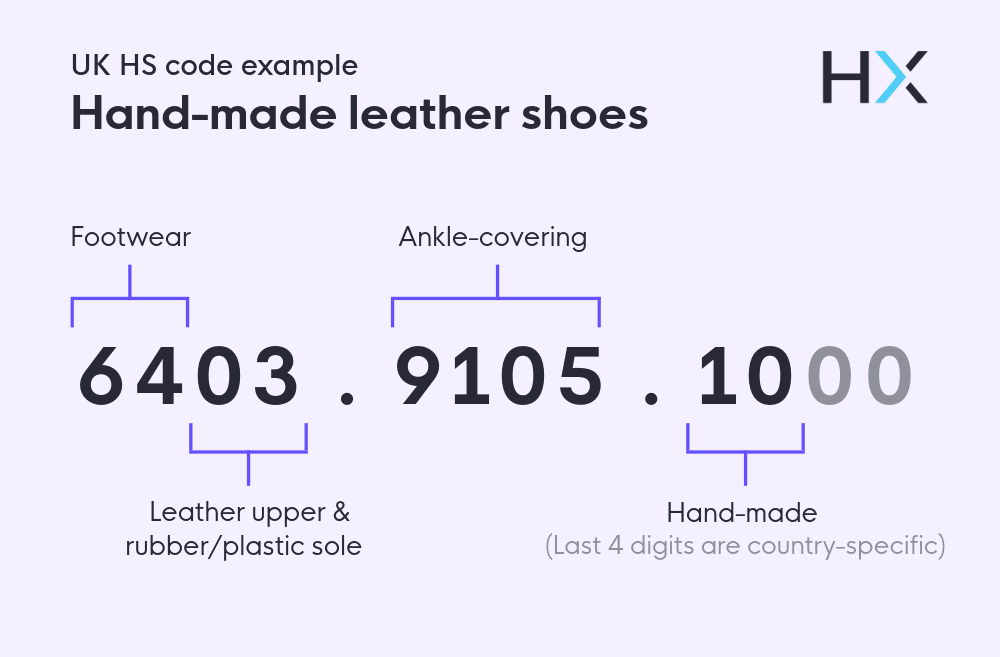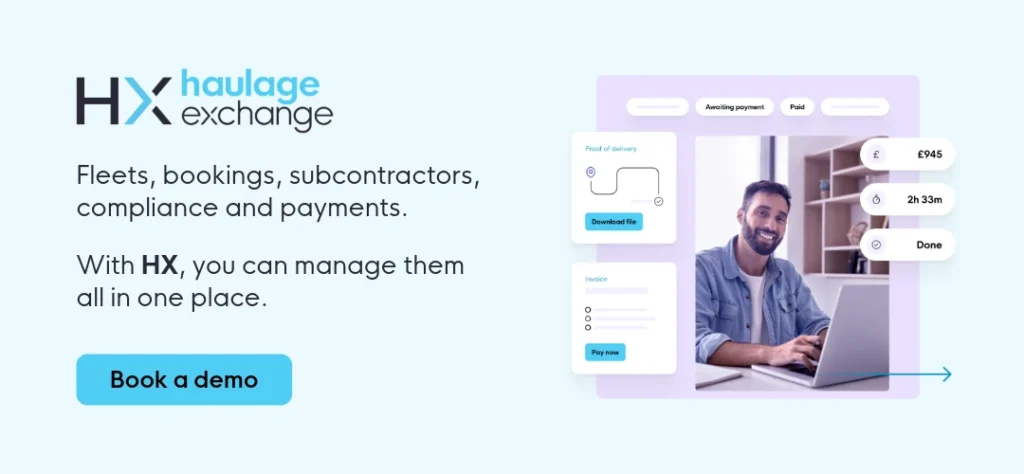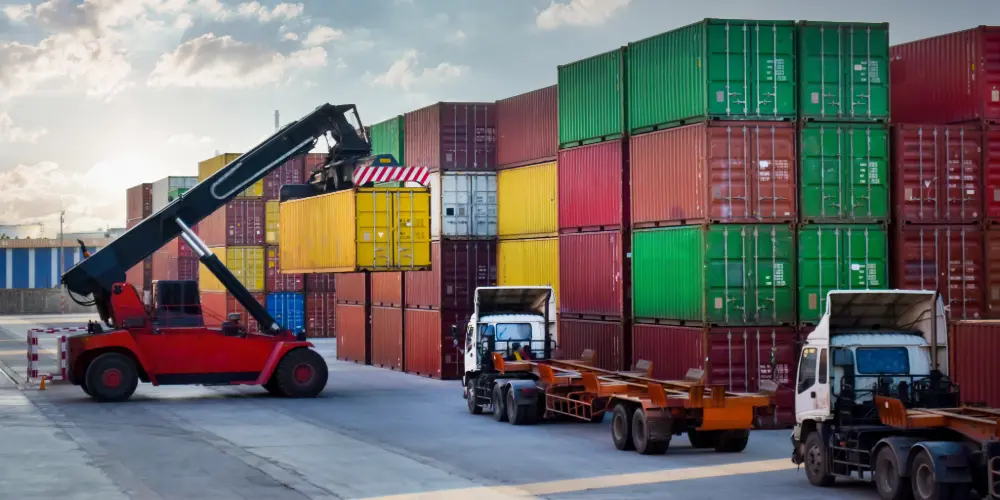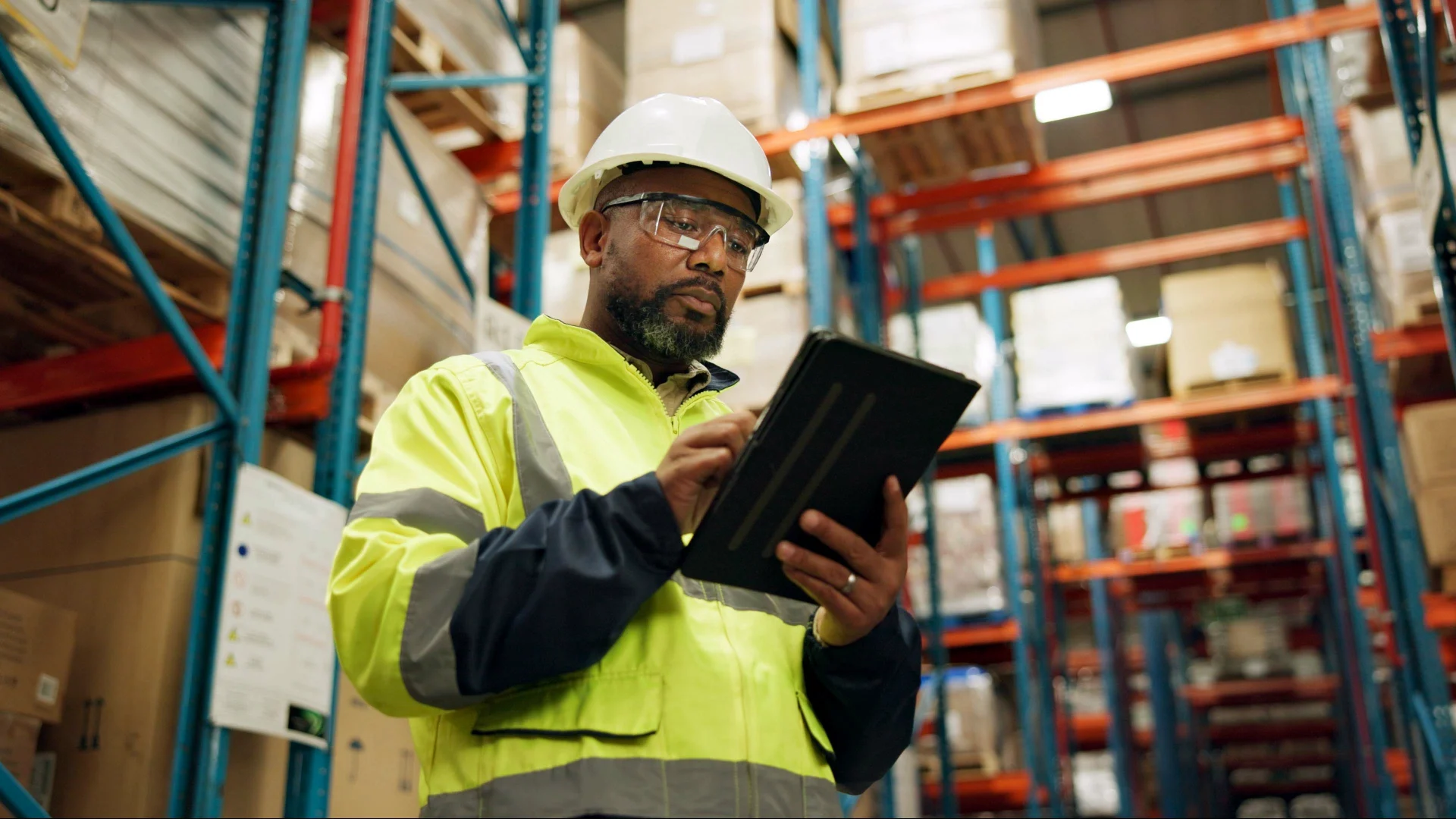Bringing goods into the UK involves more than just arranging transport. You’ll also have to deal with import tax, which affects both the cost of a shipment and how you plan your haulage jobs.
Whether you run a small logistics business or a larger freight operation, getting to grips with duties and charges means fewer surprises when goods arrive at the border.
This guide breaks it all down, from definitions to calculations and everything in between.
What we’ll cover
Fleets, bookings, subcontractors, compliance & payments.
With HX, you can manage them all in one place.
What is import tax and why does it matter?
Import tax covers all the charges you pay when goods enter the country. In the UK, this usually includes import duty, VAT, excise duties, and any admin fees tied to border checks or processing.
Hauliers and freight forwarders don’t always pay these fees directly, but they still affect profit margins and delivery times. The more you understand the charges, the easier it is to quote accurately, manage delays, and keep your clients informed.
Understanding the difference: Import duty vs import tax
It’s easy to mix up import duty and import tax, but they’re not the same.
Import duty is a tariff applied based on the type of goods and where they’re coming from. It’s often used to protect local industries and varies depending on trade agreements and classifications.
Import tax is a broader term. It includes import duty but also adds VAT, excise, and other charges linked to customs clearance. So, while import duty is one part of the process, import taxes cover the full cost at the border.
Knowing the difference helps with planning and paperwork, especially if you’re quoting on international jobs.
How import custom duties affect haulage and freight operations
If your business handles cross-border shipments, import custom duties can shape your costs and delivery schedules.
Let’s say a customer wants to import goods from outside the EU. If duty rates change or the product classification is wrong, you could face delays or unexpected costs. This might mean vehicles sit idle or additional charges are passed on.
These duties also affect whether a customer chooses to import or find a supplier within the UK. As a haulier or even a courier company, being informed puts you in a stronger position to guide clients and manage expectations.
Even large haulage business operators are reviewing their sourcing and delivery models based on how import duties impact total landed cost.
Tariff codes and why HS classification matters
All goods have a tariff classification, known as an HS (Harmonised System) code. This code decides the duty rate and any restrictions or checks that apply.
Even a small mistake here can lead to incorrect charges. Worse, it could cause goods to be delayed, inspected, or rejected.
If you’re just starting to start a freight forwarding company, learning how HS codes work is time well spent. For experienced firms, it’s often worth having a customs broker on hand or training staff in product classification.
The UK government’s Trade Tariff tool lets you search codes by product type, material, or use.

Examples of duty rates in the UK
Duty rates depend on what you’re importing and where it’s from. Some goods are zero-rated, while others carry higher charges.
Here’s a general idea of how the duty varies:
- Clothing and textiles from outside trade agreement zones: 8–12%
- Alcohol: Up to £28 per litre plus VAT
- Tobacco: Around £400 per 1,000 cigarettes
- Electronics: Often duty-free or under 5% depending on origin
Goods from countries with free trade deals may qualify for reduced or zero import duty. But you’ll need the right proof of origin to apply.
Changes to trade rules after Brexit also mean businesses should check updated duty rates regularly.

How to calculate your total import taxes
There’s no one-size-fits-all formula, but here’s how to approach import tax calculations for each shipment.
Step 1: Value of goods and how it’s declared
Start with the commercial value of the goods. This should match the invoice and reflect the actual price paid.
Step 2: Apply import duty based on HS codes
Using the HS code and country of origin, apply the correct percentage to the goods’ value.
For example, if goods are worth £8,000 and the duty rate is 5%, the import duty comes to £400.
Step 3: Add VAT, excise, and clearance fees
Next, add any excise duties if you’re importing alcohol, tobacco, or fuel.
Then include shipping and insurance costs to calculate the VAT base. VAT is usually charged at 20% on this total amount.
You may also face admin or handling charges for customs clearance, which vary by provider.
Understand specific vs ad valorem duties
The UK uses two main types of import custom duties:
- Ad valorem: A percentage of the goods’ value
- Specific: A set amount per unit, volume, or weight
Some goods, like alcohol, may attract both types of duty. Knowing which applies helps you plan costs more accurately.
Worked example with common figures
Let’s say you’re importing goods worth £10,000. Shipping and insurance cost £1,000. The import duty rate is 5%, and no excise duty applies.
- Duty = £500
- VAT = 20% of (£10,000 + £1,000 + £500) = £2,300
- Total import tax = £2,800
Who pays import custom duties – and when?
This depends on the Incoterms used in the agreement. In most cases, the buyer pays the import tax once the goods arrive in the UK.
However, with Delivered Duty Paid (DDP) terms, the seller handles all charges before delivery. While this can reduce admin for the buyer, it usually adds to the total cost.
If you’re transporting goods under DDP terms, make sure clients are clear on what’s included in your quote. For DAP or FCA terms, they’ll need to settle duties before release.
Reducing import tax with reliefs and exemptions
You may be able to reduce or avoid some charges under HMRC schemes.
- Inward Processing Relief (IPR) lets you import goods for repair or reprocessing without paying duty, as long as they’re re-exported
- Outward Processing Relief (OPR) works the other way—UK goods go abroad for finishing and return duty-free
- Customs warehousing allows temporary duty suspension until goods are sold
Goods under £135 may also be exempt from import duty, but VAT might still apply depending on the seller’s location and sales method.
These schemes can help both small and high-risk freight operators manage margins. Just be sure to follow HMRC rules carefully.
Preparing customs paperwork to avoid penalties
Getting paperwork right is just as important as the transport itself.
If your documents are incomplete or incorrect, your load could be delayed, returned, or even seized.
Here’s what you’ll typically need:
- A full description of the goods
- Correct HS code
- True value of the goods
- Country of origin
- Any licences, safety documents, or certificates of origin
Working with reliable freight forwarders or trained staff helps prevent mistakes. And if you’re running a large haulage business or you’re just running courier vehicles, investing in in-house customs knowledge is worth it.
Product examples of VAT and excise duty
VAT is usually charged at 20%, but excise rates depend on the product type and volume.
Here are a few examples that often come up in haulage and logistics jobs:
- Wine (still, over 5.5% ABV): £2.23 per litre in excise duty
- Diesel fuel (for commercial import): £0.5795 per litre
- Cigarettes: £268.63 per 1,000 sticks plus 16.5% of the retail price
- Sparkling wine: Higher rates than still wine due to product category
- Perfume: Charged based on alcohol content as well as volume
These rates are added on top of import duty, increasing the total import tax. Always check current figures using the UK government’s Trade Tariff tool.
Quick tips for hauliers managing international freight
Keep these tips in mind when handling cross-border haulage loads:
- Always double-check tariff codes before quoting
- Track changes to UK duty rates regularly
- Consider duty deferment schemes for high-volume shipments
- Get written proof of origin for trade agreement rates
- Build strong partnerships with customs agents or brokers
For high-risk freight
When transporting high-risk freight, like hazardous goods or high-value electronics, extra checks and tax liabilities may apply.
Products may need additional licences, safety documentation, or controlled entry points. Any delay in documentation can affect customs clearance, or result in added storage fees if the load can’t proceed.
From a tax angle, these goods are often subject to specific import custom duties and excise charges. You’ll also want to consider cargo insurance that covers tax disputes or delayed clearances.
If you handle specialist contracts like ADR haulage, work closely with your customs agent and keep a record of all product classifications, licences, and past declarations. Consistency helps reduce checks over time.
Frequently asked questions
What is the meaning of custom duty?
Custom duty refers to the tariff charged on goods when they are imported into a country. It helps protect domestic industries and regulates international trade. The amount depends on the type of goods and where they come from.
How to calculate custom duty?
Start by determining the value of your goods. Apply the correct duty percentage based on the HS code and country of origin. Then calculate VAT, excise duty, and any related fees to reach the full import tax amount.
What is import tax called?
Import tax is a broad term that includes import duty, VAT, excise duties, and other related charges applied when goods enter the country. In the UK, all these charges must be paid before customs clearance is granted. Together, they form the full cost of importing goods.
What is import tax in simple terms?
Import tax refers to the total charges applied when goods enter the UK. It includes import duty, VAT, excise, and admin fees. These costs must be settled before goods can clear customs.




